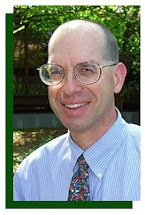I spoke last week at the public meeting of the Missouri Conservation Commission about how the human dimensions of conservation, that is social, economic, and opinion information, has been used to shape the decision-making and outcomes of fish, forest, and wildlife management in Missouri. By human dimensions, I mean a wide variety of demographic, opinion, survey, participation, focus group, public meeting, and public comment information. It's what a business would call market information; information that can be used to make decisions based on facts.
This week I was reading again parts of the monograph by Jim Collins, Good to Great and the Social Sectors, and I believe many of the ideas in the book show clearly why human dimensions information is so valuable to improve conservation decision-making.
For example, Collins writes that great companies have a "deep understanding of three intersecting circles: 1) what you are deeply passionate about, 2) what you can be the best in the world at, and 3) what best drives your economic engine."
Now consider the human dimensions information that many Missourians participate in nature-related recreation. Many more are interested in Missouri's fish, forests, and wildlife. Add to those thoughts the highly talented Department of Conservation employees who are both deeply passionate about the resources they manage for Missourians and knowledgeable about fish, forests, and wildlife. They can be the best in the world at managing nature in Missouri. Now, as the third ingredient, add the economic engine of volunteers, partnerships, and the sustained funding of the Conservation Sales Tax that Missourians voted to establish in 1976 and I believe we have a recipe to achieve, as Collins writes, "pockets of greatness," for conservation in Missouri.
Human dimensions information also helps Department staff to, in the words of Collins, "attain piercing clarity about how to produce the best long-term results," for nature in Missouri. And this is very important, since the budget of the Department is limited and small, at less than one percent of the total State of Missouri annual budget. I believe that human dimensions information helps the Department to be accountable, to improve its performance, and will continue to be useful in the future.
More information about the success of the Missouri Department of Conservation is available in the 2006-2007 Annual Report.
Subscribe to:
Post Comments (Atom)


No comments:
Post a Comment